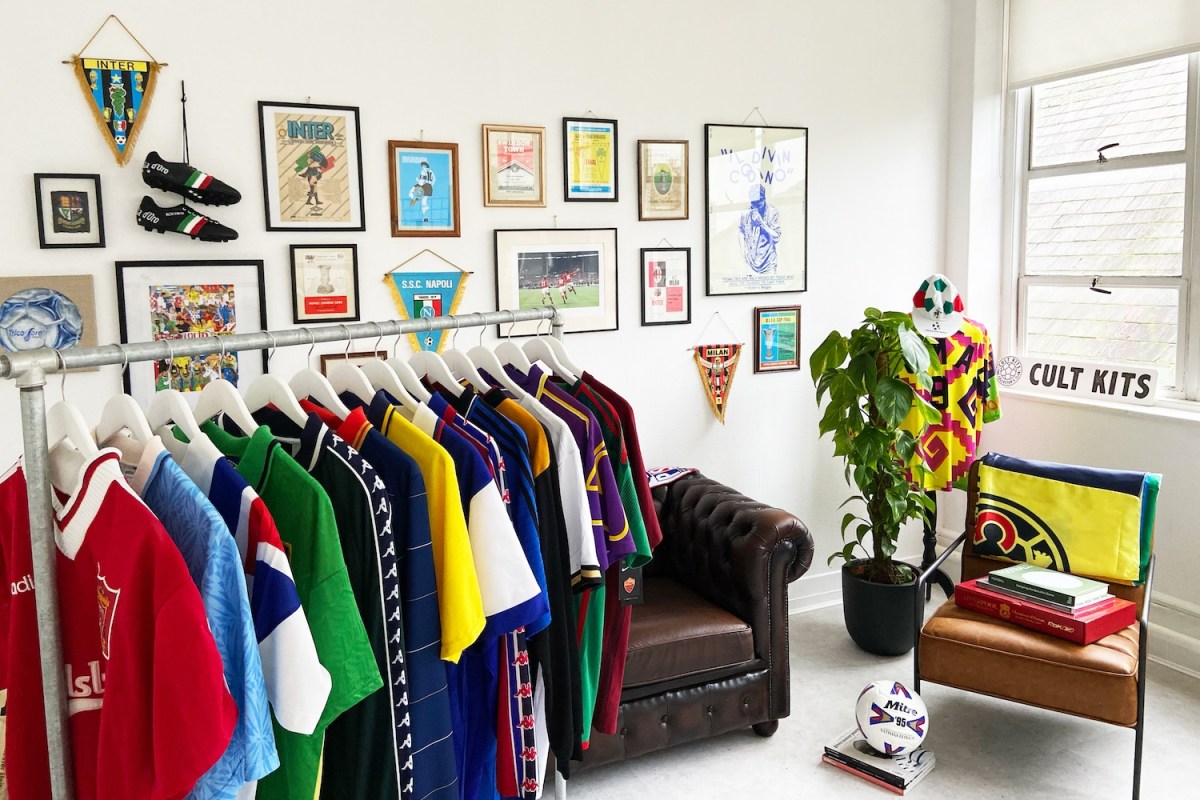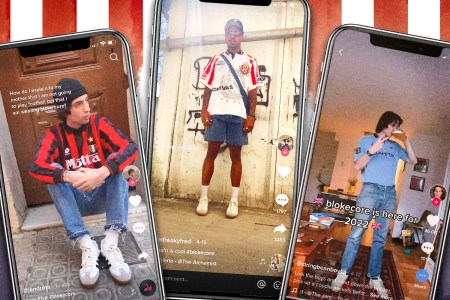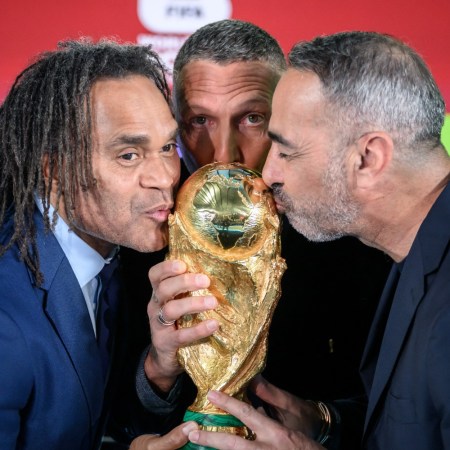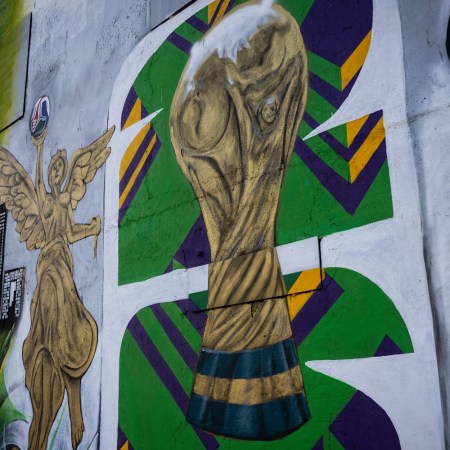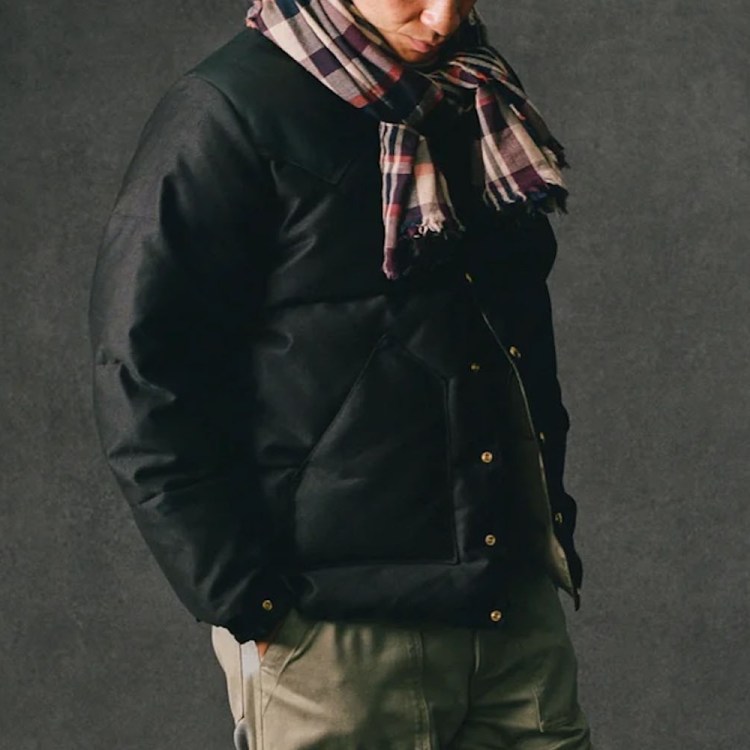One morning in 2018, a couple of the guys behind Cult Kits, the then three-year-old online marketplace for vintage soccer jerseys, hung up a few hundred pieces of inventory in the rear of a London pub. It was around Christmastime, and thus freezing outside, and they’d only promoted their first in-person pop-up store with one or two social media posts. Not expecting many customers, the pair lazily tagged the items with prices.
David Jones, one of the co-founders of Cult Kits, wasn’t even on the premises. Instead, he was at his office day job in advertising, which he still needed back then to pay the bills. Shortly after the makeshift shop opened for business, however, Jones received a frantic phone call from his business partner, Josh Warwick.
“When are you getting here?” Warwick asked.
“What do you mean?” Jones said, taken aback. “What’s going on?”
“We don’t have enough people,” Warwick replied. “We didn’t even write the costs on all the tags; we didn’t have enough time.”
As people rushed toward racks of colorful shirts, representing teams from multiple continents, Jones says the space looked less like a bar and more like a big-box store on Black Friday.
“It was like sharks on a whale carcass,” he says. “It was ridiculous.”
Ringing up sales, Warwick and his colleague guesstimated prices. By the end of the day, according to Jones, around 90% of their inventory had been carried back out the door.
It’s one thing to hear a story like this from the U.K., or one of the many other countries outside the United States that obsesses over “football.” But from coast to coast here in the U.S. — where, by some measures of interest, soccer isn’t even a top-five sport — American-based secondhand soccer jersey sellers are posting videos of similar scenes to social media. EBay has also been a hotspot for Americans looking to buy vintage kits for years, and user-built marketplaces are sprouting up on Facebook, Reddit and Discord. The associated style trend is so widespread it already has a debatably inaccurate moniker, “bloke core,” attached to it, and U.K.-based retailers are even shipping soccer shirts across the Atlantic for stateside pop-ups.
Why are Americans suddenly hot for 30-year-old yellow jerseys seemingly patterned so an optical illusion will emerge after a few minutes of continuous staring? Reasons are plentiful.
“It’s much more accessible as a sport in general to a lot of people,” says Jones, 40, who since that commercial feeding frenzy in the back of the bar has quit his corporate gig to help oversee Cult Kits full-time. “People are finally understanding the sport as well.”
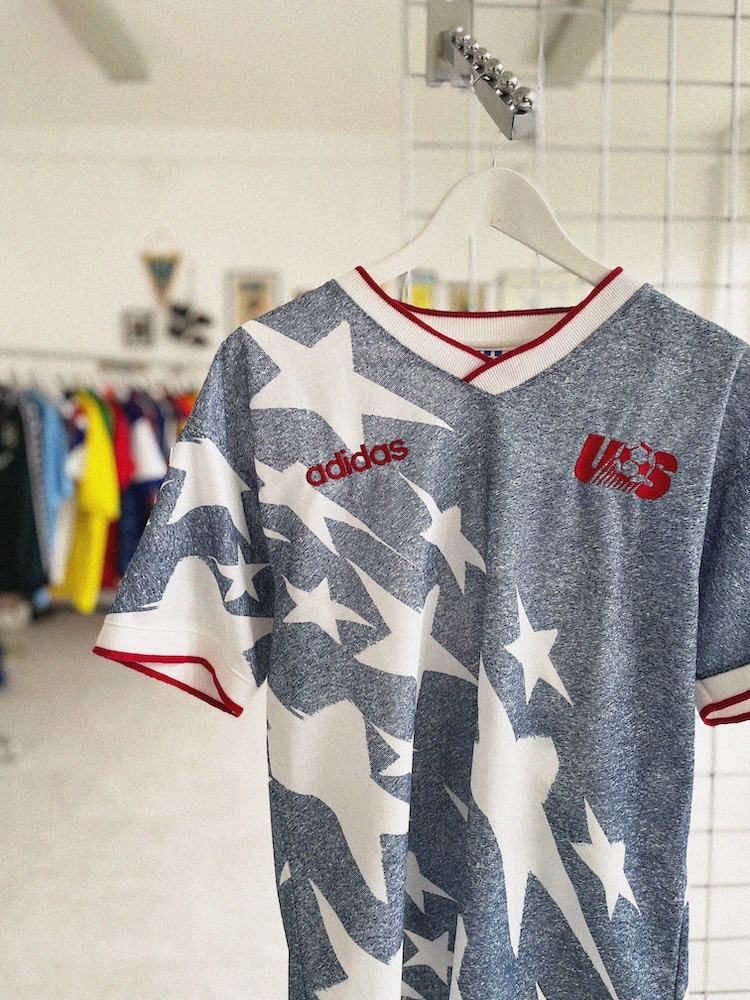
The rise in streaming TV created more channels for creators and, therefore, a greater need for content. Live events are pretty much the only programs that inspire real-time consumption, so while an increasing number of viewers choose to watch The Bear on a subscription-based, commercial-free streaming platform, advertisers have built cash-flowing aqueducts pointed toward sports.
The best soccer players in the world have always played outside U.S. borders while in their prime, but with updated broadcast technology, Americans can now watch them bicycle-kick balls into nets as easily as they watch 300-pound NFL linemen get penalized for roughing the passer. Thus, U.S. broadcasters have eagerly filled their channels with live soccer from overseas in recent years, and increased exposure to the finest players has boosted domestic interest. As more people migrate to the U.S., sometimes from places where soccer is king, they bring their fandom with them, too. And a younger viewing audience for soccer, skewed in such a way because of their greater comfort with contemporary TV technology, means more Americans with disposable incomes are closely following the sport and spending on its merchandise.
Jones, who categorizes Cult Kits as the third-largest online retailer of vintage soccer shirts in the U.K., estimates that his company’s sales to U.S. buyers have increased as much as 70% over just the past 18 months. Going further back into the depths of the COVID-19 pandemic — when the U.S. government was cutting financial assistance checks for every citizen, almost none of whom were spending on things like travel and trips to a nightclub — Jones says the American sales boost was even more robust.
Embracing Blokecore: Menswear’s Newest Trend Is Dressing for the Football Pub
Dadcore’s cousin from across the pond proves a vintage footy kit is the key to a well dressed summerChester Lech, a 43-year-old architect living in the Bay Area, started his own collection of soccer shirts during the pandemic. He’s since amassed around 150 jerseys and has become a moderator of the Reddit– and Discord-based user marketplace KitSwap. Lech says the KitSwap community has grown exponentially since it was first founded 12 years ago, with a sharp spike observed while Americans were sheltering in place. The Reddit page has more than 13,000 followers, and Lech says 2,500 people are members of the KitSwap Discord channel.
His personal collection is heavily composed of jerseys worn by French teams. When he became a fan of soccer in his late 30s, he decided to choose a European squad to follow and focused on France because he’d studied the country’s language in high school. He settled on Marseille F.C. as his primary love in part because he found the team’s primary identifying colors of white, gold and bright blue quite fetching. He just had to have their shirts, and those of other teams in Marseille’s immediate orbit as well.
The sports collectibles industry as a whole has exploded in recent years, with the global market valued at more than $412 billion today, and a 2032 projection of nearly $700 billion. Within that category, though, soccer jerseys have some of the most inherent collectibility qualities. Many buyers, like Lech, focus their efforts on obtaining shirts from across a single country, or perhaps a region. With soccer’s massive global appeal, there’s no shortage of options should a collector choose one such path. Buying based on team offerings, which Lech also does, is another way to fall down a deep, potentially pricey rabbit hole.
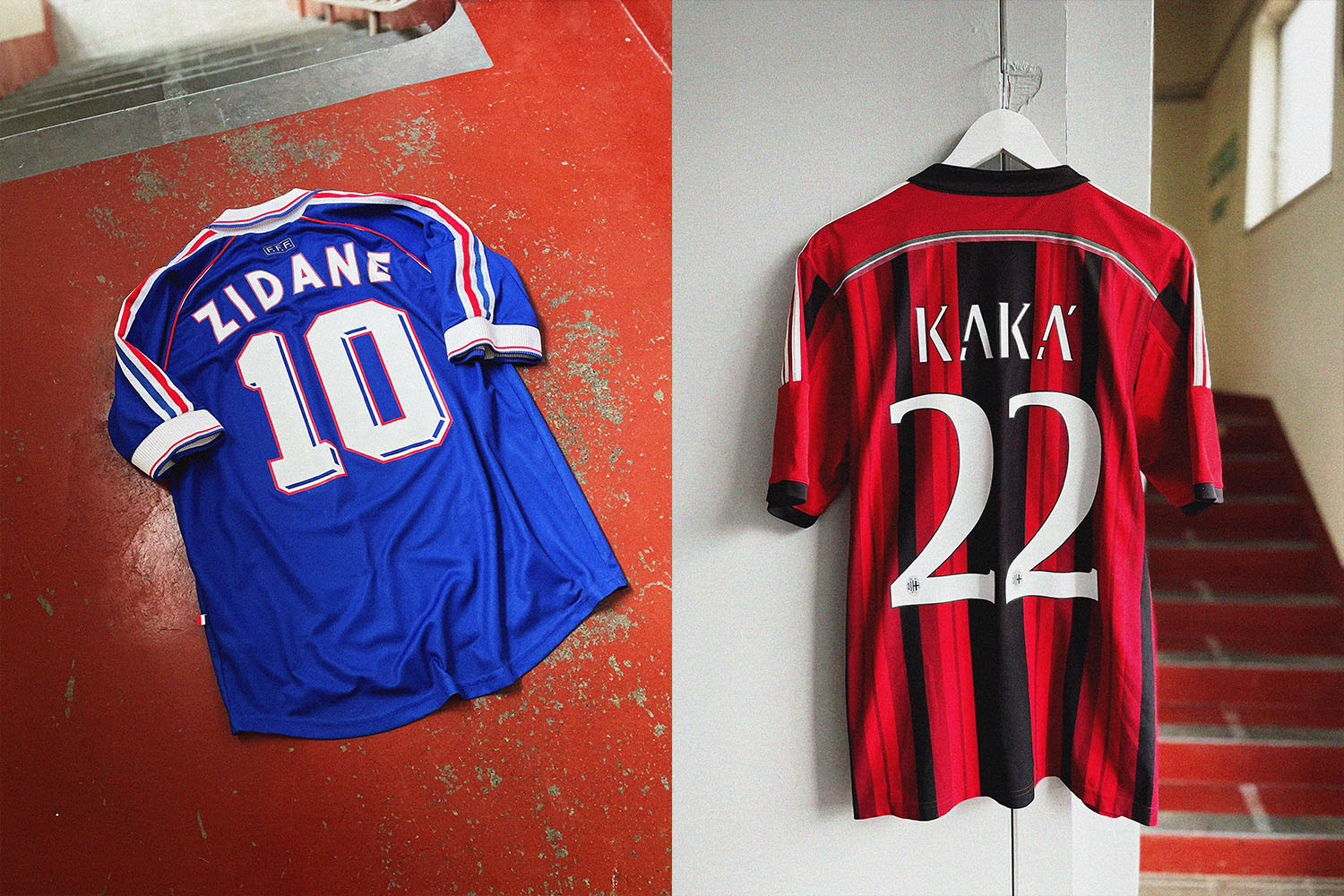
“I just followed someone that has a bunch of match-worn Marseille F.C. jerseys, and they’re all from the same season, but different iterations,” says Lech, sounding impressed.
Up until recently, teams in the “Big Four” North American pro sports leagues — the NFL, NBA, MLB and NHL — generally issued two jerseys, home and away, each year. Oftentimes the threads were identical over a number of seasons. Now, teams in all those leagues have at least one alternate jersey that players wear on select dates in the schedule, sometimes changing season to season. Soccer leagues around the world have engaged in this practice for decades, though. They often issue even more than three different shirts to players — which fans could also buy, of course — with new designs each year.
The collector of Marseille F.C. jerseys whom Lech found on social media possesses a series of shirts from the team’s 2003-04 season. Lech says it includes Marseille.’s league home, away and alternate kits; shirts worn by players in two different French football tournaments, each with different sponsors represented on them; and the jersey Marseille players wore throughout the top European club tournament, the Champions League.
“You could be collecting a team, you could be collecting a league, you could be collecting literally just one season of different team shirts of all the different kinds of iterations,” says Lech. “It’s crazy.”
Another guideline some soccer shirt collectors self-impose is to buy releases from a manufacturer whose offerings they find appealing, regardless of team or country. Some may favor Adidas jerseys versus those from Puma or Nike, for example, and will then hoard shirts strictly made by that company. Going this route, a collector can even choose specific eras to focus on. Sticking with Adidas, in an extensive series of posts, a blog called Pyro On The Pitch chronicled various templates the company used to build team jerseys through the years. Lech highlights one particularly ostentatious design seen across the globe during the 1990s that featured three sizable bars filling up the right shoulder area of the shirts and partly invading the chest, leaving no doubt to anyone watching that it was manufactured by Adidas.
Not all soccer jersey designs lean into gaudiness to garner greater attention, though. Usually the goal is to find new, more tasteful twists to team color combinations and the incorporation of club crests.
“You could be collecting a team, you could be collecting a league, you could be collecting literally just one season of different team shirts of all the different kinds of iterations.”
Jack Grimse, a soccer content producer in his early 30s who lives in New York City, says his kit collection numbers around 60. He posts purchase reveals on social media, and recently on TikTok he discussed a find he was particularly excited about: a shirt from the 1994-95 season of an Austrian-based club then called Casino Salzburg. Also manufactured by Adidas, this jersey features a triumvirate of more modestly sized purple stripes running down each side of the front, starting at the shoulders. Calling the shirt “an absolute treasure” in his TikTok post, he appreciates the shade of purple, as well as the felt flocking of the sublimated team sponsor logo scrawled across the chest. But for Grimse, the team crest — or badge — on the upper left of the chest is the real highlight.
“I think this badge is amazing,” he tells me in an interview, appreciating its minimalist approach. The team name is written out in purple in a white circle, and in the middle a player in a purple jersey kicks a soccer ball, his head, shoulders and outstretched arms emerging out of the top.
Jerseys are judged by collectors on a number of criteria, with the shape of the badge and the way it mingles with color patterns and sponsor names being of prime concern.
And, as Grimse says, “every shirt can have a story within itself.” Especially because of their annual redesigns, soccer jerseys are markers of team history, but also that of a player whose name and number appears on the back, as well as the league, city, country and continent that hosts the club. Soccer shirts can also reflect the personal lives of their owners.
Carlos Mojica, a 36-year-old midwesterner who works in marketing and communications, has a soccer shirt collection running about 50 deep. The first two jerseys were sent to him by his father, who was still living in El Salvador after Mojica and his mother migrated from there to the U.S. Ironically, the pair of shirts Mojica’s dad bought him are from bitter South American rivals, the Brazilian and Argentinian national teams. For a number of years, Mojica’s collection remained at two.
“When I was a kid, if there was a game, since I didn’t have any jerseys, I would find a T-shirt that would match the colors of a team that was playing,” Mojica says. “Around college, when I started to have more money, that’s when I started [collecting] and it’s the one thing that I collect.”
He buys jerseys of teams and players he grew up supporting, as well as clubs he’s worked with professionally. “By and large, there has to be some sort of attachment,” he says.
This attachment can feel more profound with the purchase of jerseys actually worn in matches by players. Such items are what comprise most of Elliott Stanek’s collection. A 33-year-old who lives in Columbus, Ohio, and is a diehard fan of the city’s Major League Soccer team, the Crew, Stanek says he owns nearly 30 jerseys dating back a few decades. He focuses on game-worn shirts because, he says, “I really like having a piece of the game.” He calls himself less of a collector and more of a “preservationist,” someone who wants to “keep these styles alive.” He often buys online, tweeting excitedly about his purchases, like a match-worn Columbus Crew jersey from the team’s 1996 inaugural season that he recently acquired.
Randomly happening upon an available item a collector might covet in the online universe is a major dopamine hit — doubly so if it’s listed at a more affordable price than it perhaps should be. That’s partly why Stanek also loves thrifting, which fosters the most unexpected finds.
“People pick stuff up all over the world,” he says, “so I’ll find shirts and I don’t even know what the club is.” To find out, he’ll post a photo to social media and ask the kit community for help.
He says his most niche item is a goalkeeper’s jersey he believes is match-worn, which he bought for a buck at a Goodwill store. It was issued by the Memphis Express, a professional soccer team that existed for only four years and played in the fourth tier of U.S. soccer.
Chants, Cheers and Beers With the Most Powerful Fans in Sports
We embedded with the Columbus Crew superfans known as The Nordecke for one wild weekend.Denver resident and jersey collector Kyle Arnott, 28, shops for soccer shirts on eBay, but will also pick things up at department stores when nearly year-old kits that have yet to sell are relegated to deep discount bins. (One never knows the value they may accrue over time.) He, too, is drawn to niche items, like the jersey he has of a Sunderland F.C. player, Milton Núñez, who appeared in just a single match for the club because team management eventually realized they signed the wrong player.
“I definitely like the smaller, lesser-known clubs and [their] stories,” Arnott says. His chosen English Premier League team, out of Wolverhampton, is nicknamed the Wolves. He says he began favoring the club because it wasn’t mainstream. He also felt their jerseys and crest — a striking hexagonal badge with a futuristic wolf’s head, like something out of Star Trek — “looked great.”
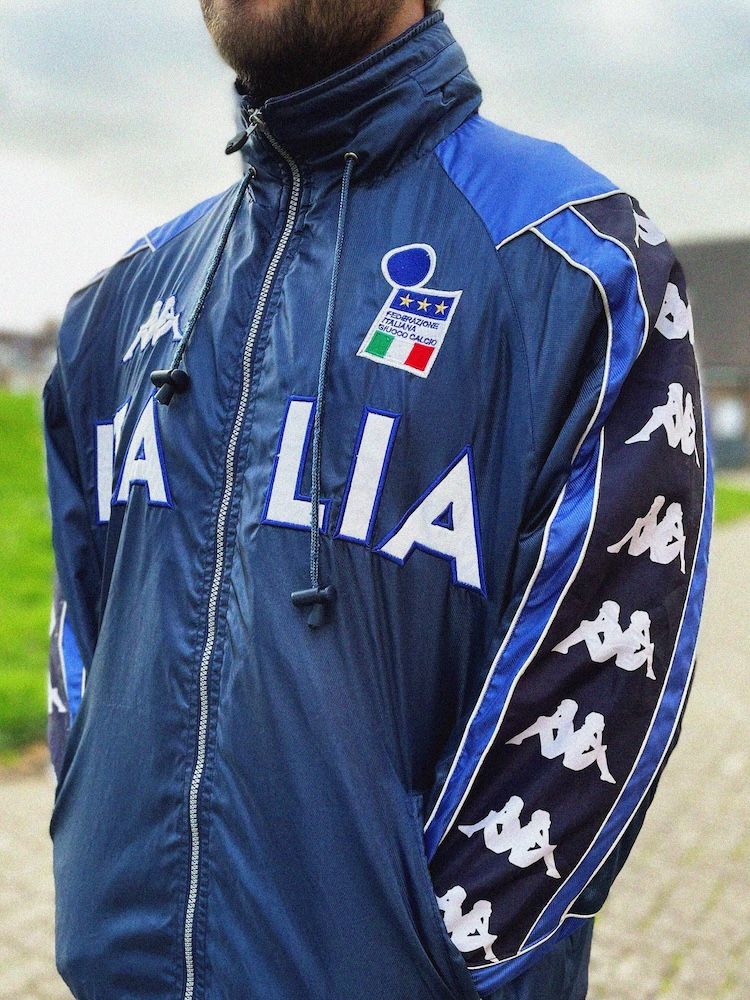
Arnott says he takes good care of the jerseys in his collection, so that they may retain value, but he will wear them — in settings where they’re unlikely to be damaged, at least. “They’re garments at the end of the day,” he says. Given the endless color combinations and design approaches jersey manufacturers have leveraged for generations, these vintage items can be a versatile feature of anyone’s wardrobe.
The fashion-forward angle of this category is apparent in the social media posts from retailers. Treated like priceless works of art worthy of museum display, the jerseys are often endearingly lit in photos clearly taken by high-quality digital cameras. Cult Kits sometimes lays their available jerseys out across the landings in an office building stairwell for photographs, the colors popping with support from the backdrop of weathered red paint.
But many collectors don’t don the fits. Viewing the shirts as investments, they instead store them safely. Those playing the collectibles long game rely on trusted retailers so as to avoid fakes, which are prevalent in the soccer jersey world. With so many manufacturers across the globe pumping them out for countless clubs that may or may not still exist, it’s relatively easy to lose track of what has come from where.
“What producers of fake shirts do is they will just use something of a similar product line,” says Jones, the Cult Kits co-founder. “So you might think you’re buying a [Lionel] Messi Argentina Adidas shirt, when actually you’re just buying an Adidas template for another team or something like that.”
Cult Kits has built a reputation in part on the back of its authentication process. One tool of authentication that Jones, his product team and many collectors employ is Google. They simply type a product line number usually found on the item’s internal tag into the search bar and, if the jersey is authentic, information about the manufacturer, where and when it was made and for what team is revealed. Jones says mistakes happen at Cult Kits, but if a buyer ever learns an item they purchased from the site turns out to be a fugazi, the company will always refund their money.
Including Jones, Cult Kits now employs nine people full-time. They’re considering a brick-and-mortar location in England, but for now have their sights set on New York City — for their first pop-up store in the U.S., which Jones says should open in late February or early March. Soccer may remain not quite as popular to American sports fans as football, basketball, baseball, hockey or even golf, but with interest growing exponentially in the U.S., combined with the collectibles industry taking off and an undeniable cool factor for many soccer jerseys, Jones may need more manpower in New York than Cult Kits had five years ago in the London pub.
This article appeared in an InsideHook newsletter. Sign up for free to get more on travel, wellness, style, drinking, and culture.
